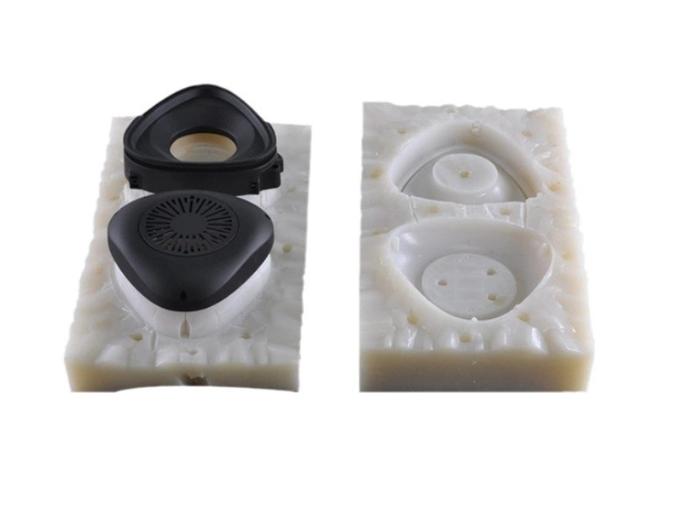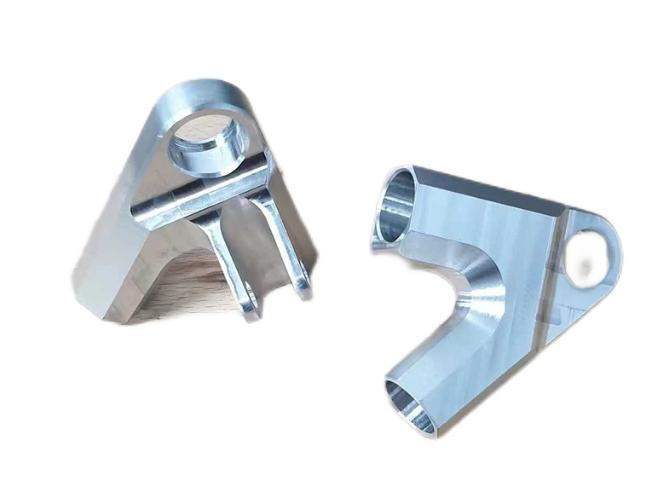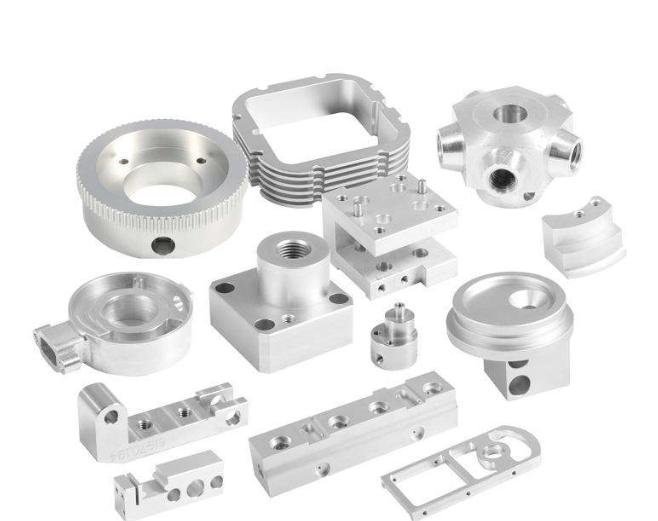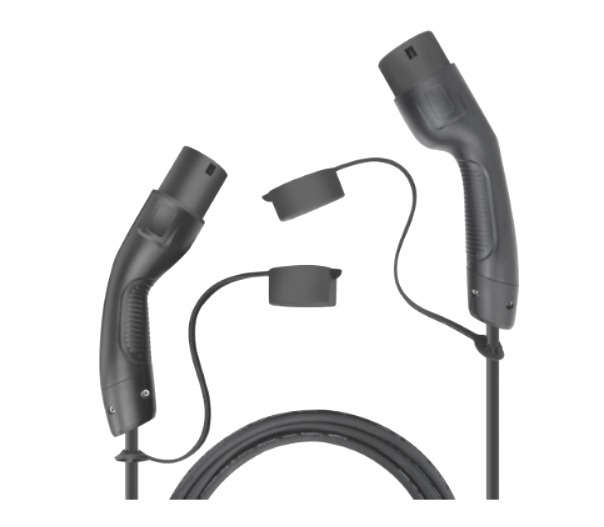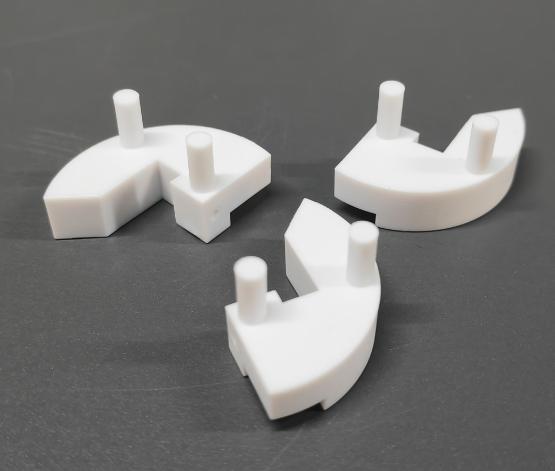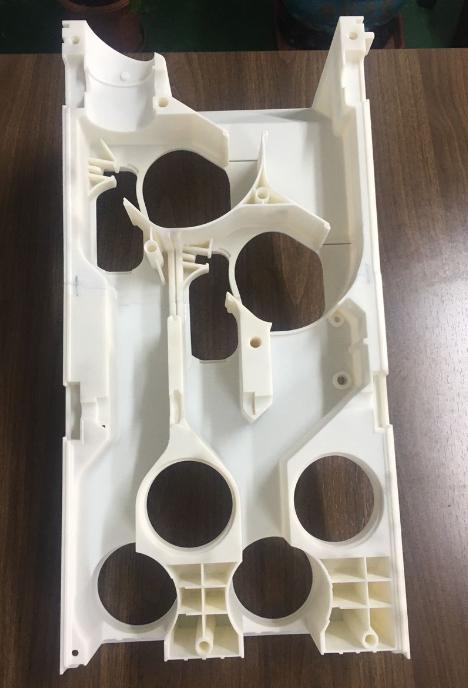Die Casting vs Injection Molding: What are Their Key Differences
In today’s age of high-performance and efficient manufacturing, die casting and injection molding are two of the most desirable shaping technologies. Both these processes have the ability to convert raw material into a finished part at high repeatability and speed and hence are ideally suited for mass production.
At first glance, they may seem similar; both involve molds and high-pressure injection, yet they differ significantly in terms of materials used, forming principles, cost structure, and application fields.
In this article, we’ll take an in-depth look at die casting vs injection molding from multiple perspectives, to help you make the most informed choice for your next production project.
Table of Contents
Part 1. What is Die Casting?
Die casting is a method of metal casting in which a precision form is filled with molten metal that is under pressure. The metal fills the mold cavity swiftly, then quenches, and solidifies, thus becoming a segment of a detailed and high dimensional constituent.
This method is an adaptation of conventional metal casting. The rugged parts with complex and detailed engineering surfaces are produced with high-pressure injection of metal.
In die casting, the most used alloys are aluminum, zinc, and magnesium. These alloys have a high strength to weight ratio, high thermal conductivity, and high corrosion resistance which are critical and needed in the automotive, electronic, and aerospace sectors.
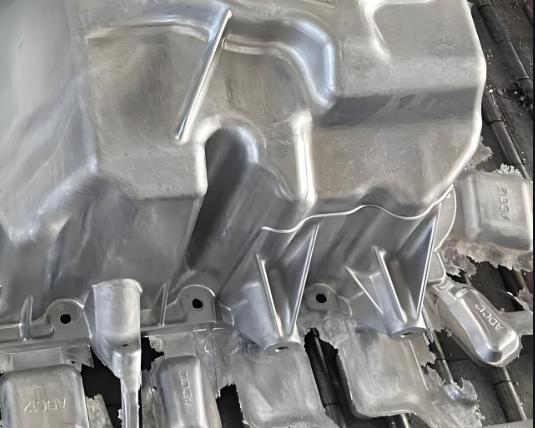
Main Steps of Die Casting Process:
- Melting the Metal – Metal is melted into a molten state and maintained at a desired temperature.
- High-Pressure Injection – Molten metal is forced into the mold cavity at high pressure and velocity.
- Cooling and Solidification – Metal cools and solidifies rapidly in the mold to form a solid structure.
- Ejection and Post-Processing – Casting is removed and may be trimmed, polished, sandblasted, or surface treated.
Key Features:
- High dimensional accuracy and repeatability – Suitable for close tolerance requirements.
- Good surface finish – The casting surface is smooth and ready for painting, plating, or polishing.
- Suitable for large quantity production – Offers low cost per part and high production efficiency.
- Good mechanical properties – Die-cast components typically have high strength and hardness.
Part 2. What is Injection Molding?
Injection molding is a manufacturing process where one heats thermoplastic polymers to a liquid state while ultimately injecting them into a mold and allowing them to cool and take a solid form at a desired shape. Numerous variants of plastics like ABS, PP, PVC, Polycarbonate, and nylons can be utilized for this process.
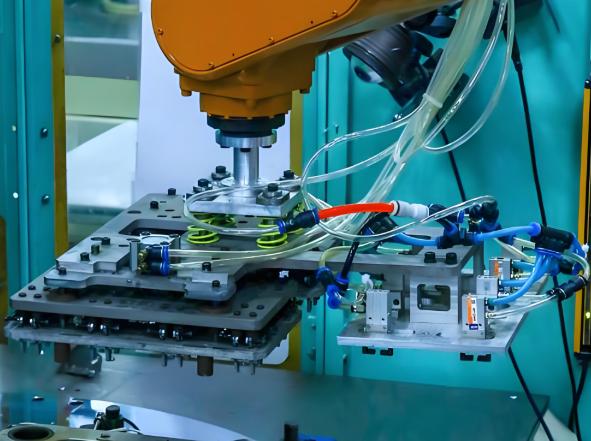
Main Steps of Injection Molding Process:
- Plasticizing – In this preliminary stage, the plastic resin pellets are heated to a molten state which is the precursor to the resin being injected into the mold.
- Injection – High pressure is used to inject the thermoplastic polymers into the desired mold cavity.
- Cooling – The molten material is allowed to cool when the mold is closed.
- Ejection – These steps are concluded by opening the mold and ejecting the prepared thermoplastic.
Key Features:
- Capable of producing complex geometries and fine details – Ideal for intricate designs and thin-walled parts.
- High production efficiency with short cycle times – Well suited for large-volume manufacturing.
- Low unit cost for mass production – Economical for high-volume plastic part production.
Part 3. Die Casting vs Injection Molding: Key Differences
By now, we suppose you have some fundamental knowledge regarding die casting and injection molding. Here we are comparing both processes from different perspectives so that you can easily and intuitively grasp their differences and know which manufacturing process is best suited to what needs.
1. Materials
Die Casting:
Die casting largely utilizes metal alloys such as aluminum, zinc, magnesium, and copper-based alloys. Aluminum alloys are widely used due to their lightweight, high strength, corrosion resistance, and good thermal conductivity. The fluidity and precision of zinc alloys are better thus making them ideal for complicated structures.
The lightness of magnesium alloys is very useful in automobile and aerospace applications. The die-cast products are ideal for components that are used in high temperature applications or require high strength, wear resistance, or high temperature.

Injection Molding:
Different types of thermoplastics such as ABS, which has impact and heat resistance, PP, which is lightweight and chemical resistant, PVC, which is weather resistant, PA (nylon), which is strong, and PC (polycarbonate), which is transparent, can be used for injection molding.
The advantages of plastics are lightweighting, low cost, ease of coloring, design of surface textures, and provides a surface finish which is important aesthetically and functionally.
Short Comparison Conclusion:
For die casting, the components are for metals and are structural. They are also subjected to high mechanical stress and temperature. On the other hand, injection molding is used for lightweight and complex shaped plastics which can also be multi-colored or have different textures.
2. Mold Cost
Die Casting:
Die casting molds undergo high temperature and pressure, so they are typically precision machined high-hardness steel. The mold lasts long, but it is costly to produce. It is difficult to change, so die casting molds suit long-term, large-lot production in order to realize cost distribution.
Injection Molding:
Injection molding molds tend to be steel or aluminum. They are simpler to manufacture, with a shorter lead time and lower cost. They are ideal for quick iterations, small batches, and product updates.
Short Comparison Conclusion:
Injection molding molds are more versatile and cost-effective for products with short life cycles or where designs are altered often. Die casting molds are better for long-term, high-volume production where high mold costs can be amortized.
3. Production Speed
Die Casting:
Die casting single-piece forming time is fast, while it does take a while for the metal to cool and be demolded. Die casting is suitable for high-volume production of high-strength metal parts, especially when high dimensional accuracy is required.
Injection Molding:
Injection molding cycles are extremely short, particularly for small or thin-walled parts. Demolding and cooling are rapid, and very high production rates are possible. Very large injection molding machines have the capacity to make several parts at a time, which further boosts output.
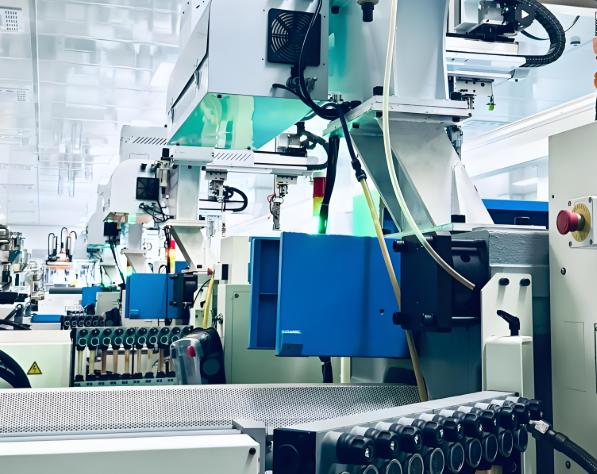
Short Comparison Conclusion:
Injection molding typically has a higher output per unit time, but die casting has the ability to make net shape, high-strength metal components in one operation. Choice depends on production volume, material, and strength needed.
4. Surface Finish & Accuracy
Die Casting:
Die-cast parts can be manufactured with good dimensional accuracy and smooth surface, having a metallic finish. They can be painted or plated, or further processed directly. Complex structures and thin-walled metal parts can be formed with accuracy.
Injection Molding:
Injection-molded parts can also be very accurate. Mold surface finish allows for various decorative finishes like matte, glossy, or custom patterns. Mechanical strength is lower than metals, but injection molding is more favorable when aesthetics and decoration are a factor.
Comparison:
Both processes meet precision requirements. Die casting is more appropriate for metallic structural parts and load-bearing components, and injection molding fares better in colorful, eye-catching, or textured plastic parts.
5. Weight
Die Casting:
With metallic materials, it weighs the parts down, suitable for high-stability and high-structural-strength applications such as mechanical supports and automotive chassis.
Injection Molding:
Plastic materials are lightweight, reducing the overall product weight, which improves portability, reduces shipping costs, and enables energy-efficient designs and wearable devices.
Short Comparison Conclusion:
Injection molding provides an advantage in terms of lightweight and portable designs, while die casting provides higher stability and durability.
6. Mechanical Strength
Die Casting:
Metal die-cast parts have high strength and hardness and can withstand heavy loads, impact, and extended wear and are appropriate for load-bearing or structural parts.
Injection Molding:
Plastic parts have less mechanical performance and can be degraded by temperature extremes, extended stress, or chemical attack. Strength and wear resistance are considerably lower than those of metal parts.
Comparison:
For load-bearing or wear-resistant parts, die casting is suitable. For lightweight, non-load-bearing, or decorative parts, injection molding is suitable.
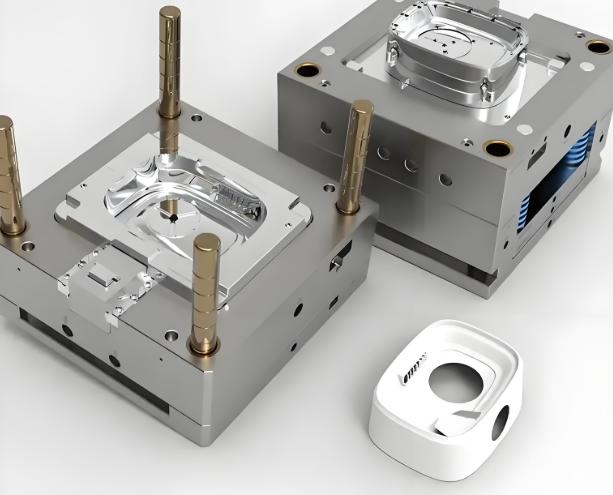
7. Thermal Conductivity
Die Casting:
Metal materials have good thermal conductivity, suitable for electronic equipment, engine parts, and mechanical parts that are heat-dissipating at high temperatures.
Injection Molding:
Plastic materials are heat insulators and cannot be applied to high-temperature or heat-dissipating components.
Short Comparison Conclusion:
Die casting has an advantage in high-temperature application and heat-dissipating parts. Injection molding has an advantage in room-temperature or low-temperature parts.
8. Typical Applications
Die Casting:
Common uses are in automotive engine components, aerospace, and industrial machinery construction where parts must exhibit robustness, wear resistance and longevity. There is a need for metal to perform.
Injection Molding:
Common uses include lightweight housings for consumer electronics, housewares, toys, everyday essentials, and packaging. These uses require complex shape, lightness and cost efficiency.
Short Comparison Conclusion:
Die casting focuses on producing robust and metal structural components for heavy-duty applications. For high-volume production, injection molding focuses on cost-effective, aesthetically complex, and multicolor plastic components.
Comparison Table of Die Casting vs Injection Molding
| Comparison Dimension | Die Casting | Injection Molding |
| Material Type | Metal (Aluminum, Zinc, Magnesium, etc.) | Plastic (ABS, PP, PC, etc.) |
| Mold Cost | High | Relatively Low |
| Production Efficiency | Fast | Faster |
| Design Flexibility | Limited | Highly Flexible |
| Product Weight | Heavier | Lightweight |
| Mechanical Strength | Very High | Medium to High |
| Surface Finish | Metallic Gloss | Various Textures and Colors |
| Application Industries | Automotive, Aerospace, Machinery Manufacturing | Consumer Electronics, Medical, Home Appliances, Packaging |
Part 4. Die Casting and Injection Molding Advantages and Disadvantages
Before the ultimate decision on whether to use die casting or injection molding, it is critical to also understand the advantages and disadvantages of each process.
1. Die Casting
Advantages:
- High Strength and Hardness: Die-cast metal parts possess high strength, and they can withstand heavy loads, impacts, and wear, hence being utilized for structural and load-bearing roles.
- High Precision and Repeatability: Die casting gives repeatable dimensional precision for big series of production with the guarantee of uniform quality.
- A Smooth Surface Finish: Components can obtain a smooth metallic finish that is ready for painting, plating, or other surface finishing techniques without additional post-processing.
- Outstanding Thermal and Electrical Conductivity: The metal materials used in die casting, particularly aluminum and copper alloys, offer superior heat dissipation and remarkable electrical conductivity which is beneficial for numerous electronic and mechanical applications.
Disadvantages:
- High Mold Manufacturing Cost: Die casting molds necessitate the use of high-precision steel, and intricate machining entails significant upfront costs.
- Restrictions to Metallic Materials: Die casting cannot be performed on plastics or any non-metal materials, which further restricts freedom of material choice.
- Large Components Demand Management of Cooling and Stress: Heavy or large metallic pieces require managed cooling and subsequent stress management to prevent warping, porosity, or fractures.

2. Injection Molding
Advantages
- Optimistic Material Alternatives: Designing with thermoplastics like ABS, PP, PC, and PA yield lightweight, economically flexible materials.
- Reduced Lead Times and Modest Mold Pricing: Simplified construction of molds and rapid injection-molding cycles allow for the process to suit high-volume production.
- High Complexity Tolerances: Injection molding accomplishes the multifaceted configuration of undercuts and detailed micro structures and textures that are impossible with metal.
- Medium to High Production are Cost-Effective: Cost efficiency, complexity of the component, material cost, and production rate fit in the favorable box.
Disadvantages
- Weak-Load and Impact Bearing: The limitations of the functionality of the metallic counter parts.
- High Heat and Long Stress: Destructive changes and loss of geometric fidelity occur with sustained high temperatures and stress.
- Controlling the Effects of Shrinkage and Cooling: The negative effects of non-uniform cooling and material shrinkage are best avoided by meticulous process planning and design.
Part 6. How to Choose Injection Molding vs Die Casting?
When deciding between die casting and injection molding, a number of factors have to be taken into consideration to guarantee that the process one chooses will meet both functional and economic requirements. The following are factors that can determine the selection:
1. Material Requirements:
For metallic parts, die casting is usually chosen because it makes strong and durable parts.
For parts that are plastic, or have to be light in weight, injection molding is preferred because of its versatility with thermoplastic materials.
2.Structural Strength:
Die casting is preferred within those applications wherein components are expected to endure elevated moisture, stress, impacts, or thermal conditions, due to the enhanced mechanical strength and heat tolerance of the metal die cast components.
In the case of non-load-bearing and ornamental components, the less costly alternative of injection-molded plastics may be used.
3. Product Weight:
When a light design is of utmost importance such as in consumer electronics, portable devices, or car interiors, injection molding serves best.
Die cast metal parts are heavier, but for essential components, they offer improved stability, structural integrity, and robustness as a trade off.

4. Cost and Production Volume:
Where small batch production is involved or where there is less budget, injection molding is economical as it involves lower mold costs and reduced production cycles.
Die casting is more suited to situations involving long-term, extensive production runs, as the greater expense associated with the mold will become more manageable with a larger volume of components being produced.
5. Surface Finish and Aesthetic Requirements:
For high thermal or electrical conductivity, die casting is preferred when plating, metallic appearance, or a high degree thermal/electrical conductivity is required.
For intricate decorative details, varied colors, and textured surfaces, flexibility of injection molding is more advantageous.
Summary:
- Metal parts → Die Casting
- Plastic parts → Injection Molding
- High strength → Die Casting
- Complex geometry or cosmetic detail → Injection Molding
By carefully considering the requirements of material, strength, weight, quantity, cost, and surface finish, manufacturers can select the most suitable manufacturing process for the specific application.
Final Thoughts
Die casting and injection molding each have their own value and areas of application.
If you require the strength and durability of metal, die casting is the preferred choice.
That being said, however, if you require a solution that provides the proper balance of cost, flexibility, light weight, and high efficiency, injection molding is the smarter option.
As a professional injection molding service provider, KENENG committed to delivering customers throughout the world with high-quality injection molding services to enable your products to stand out in a highly competitive market.


